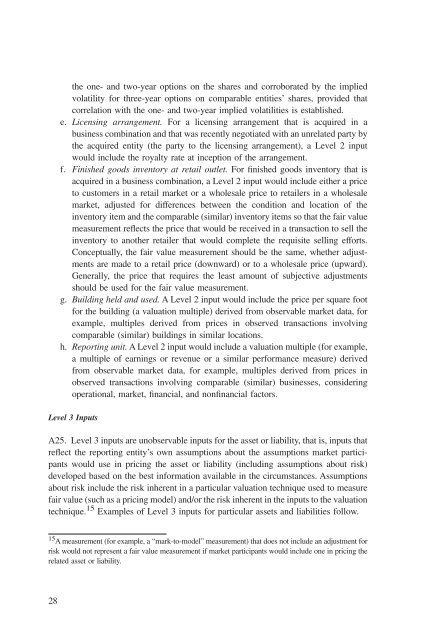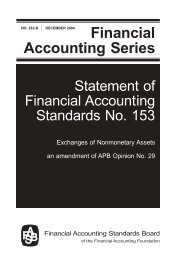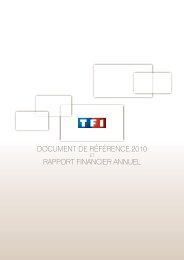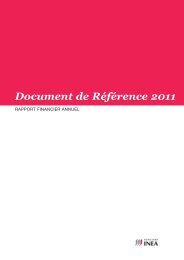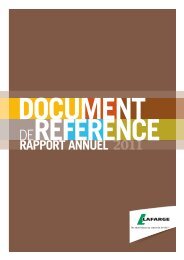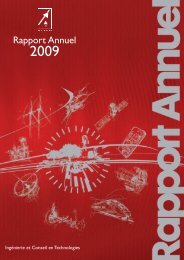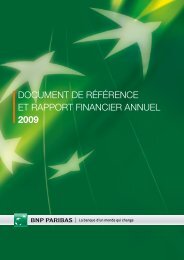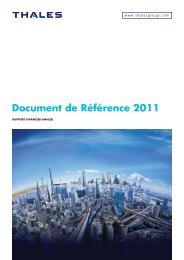Statement of Financial Accounting Standards No. 157 - Paper Audit ...
Statement of Financial Accounting Standards No. 157 - Paper Audit ...
Statement of Financial Accounting Standards No. 157 - Paper Audit ...
Create successful ePaper yourself
Turn your PDF publications into a flip-book with our unique Google optimized e-Paper software.
the one- and two-year options on the shares and corroborated by the implied<br />
volatility for three-year options on comparable entities’ shares, provided that<br />
correlation with the one- and two-year implied volatilities is established.<br />
e. Licensing arrangement. For a licensing arrangement that is acquired in a<br />
business combination and that was recently negotiated with an unrelated party by<br />
the acquired entity (the party to the licensing arrangement), a Level 2 input<br />
would include the royalty rate at inception <strong>of</strong> the arrangement.<br />
f. Finished goods inventory at retail outlet. For finished goods inventory that is<br />
acquired in a business combination, a Level 2 input would include either a price<br />
to customers in a retail market or a wholesale price to retailers in a wholesale<br />
market, adjusted for differences between the condition and location <strong>of</strong> the<br />
inventory item and the comparable (similar) inventory items so that the fair value<br />
measurement reflects the price that would be received in a transaction to sell the<br />
inventory to another retailer that would complete the requisite selling efforts.<br />
Conceptually, the fair value measurement should be the same, whether adjustments<br />
are made to a retail price (downward) or to a wholesale price (upward).<br />
Generally, the price that requires the least amount <strong>of</strong> subjective adjustments<br />
should be used for the fair value measurement.<br />
g. Building held and used. A Level 2 input would include the price per square foot<br />
for the building (a valuation multiple) derived from observable market data, for<br />
example, multiples derived from prices in observed transactions involving<br />
comparable (similar) buildings in similar locations.<br />
h. Reporting unit. A Level 2 input would include a valuation multiple (for example,<br />
a multiple <strong>of</strong> earnings or revenue or a similar performance measure) derived<br />
from observable market data, for example, multiples derived from prices in<br />
observed transactions involving comparable (similar) businesses, considering<br />
operational, market, financial, and nonfinancial factors.<br />
Level 3 Inputs<br />
A25. Level 3 inputs are unobservable inputs for the asset or liability, that is, inputs that<br />
reflect the reporting entity’s own assumptions about the assumptions market participants<br />
would use in pricing the asset or liability (including assumptions about risk)<br />
developed based on the best information available in the circumstances. Assumptions<br />
about risk include the risk inherent in a particular valuation technique used to measure<br />
fair value (such as a pricing model) and/or the risk inherent in the inputs to the valuation<br />
technique. 15 Examples <strong>of</strong> Level 3 inputs for particular assets and liabilities follow.<br />
15 A measurement (for example, a “mark-to-model” measurement) that does not include an adjustment for<br />
risk would not represent a fair value measurement if market participants would include one in pricing the<br />
related asset or liability.<br />
28


